Can Art Be a Weapon Against War?: Guerilla Art
Mark Wojahn found "Guerilla Art" to be authentic but spotty, but worth seeing, all in all. Altered Esthetics is at 1300 Quincy St. NE in Minneapolis. Their hours are Tue - Thur, 10am-4pm, Thur 6-8pm and by appt. The show is open through Sept. 29.
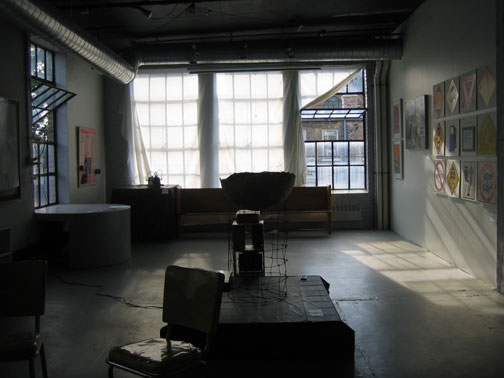
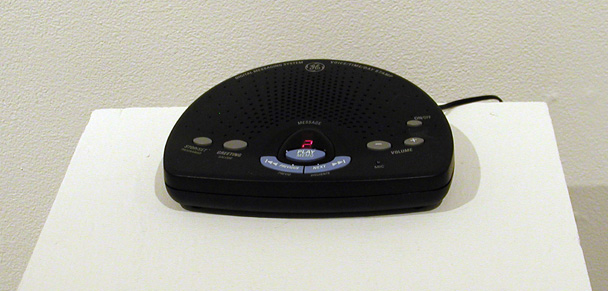
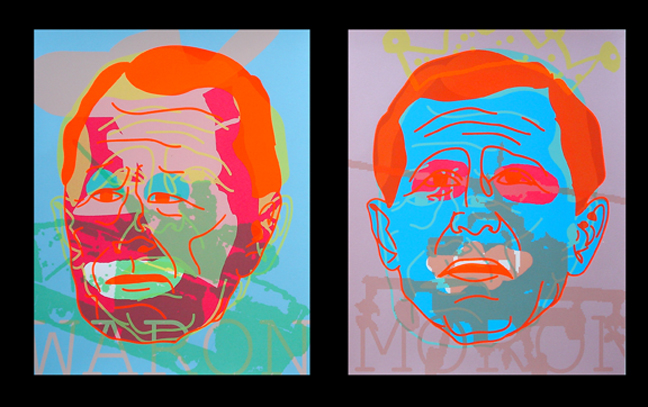

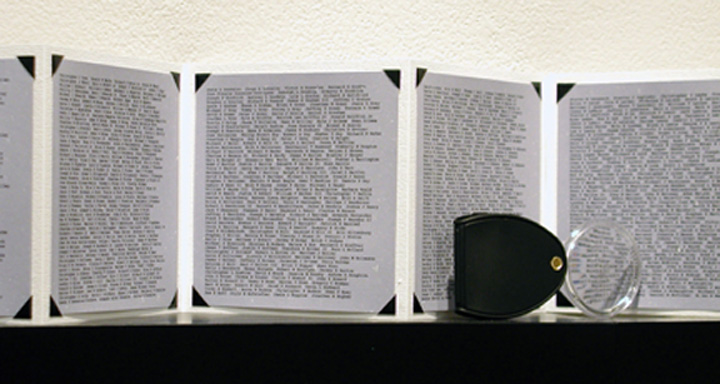
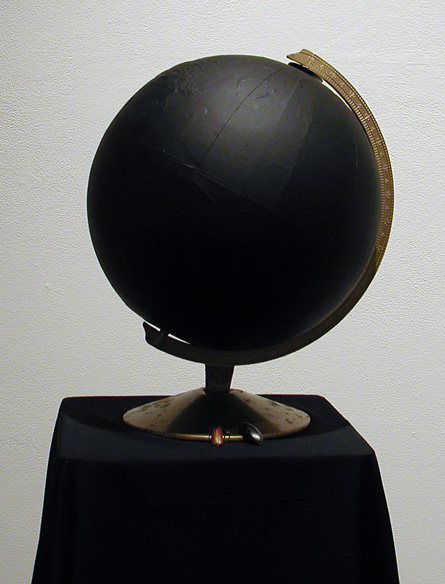
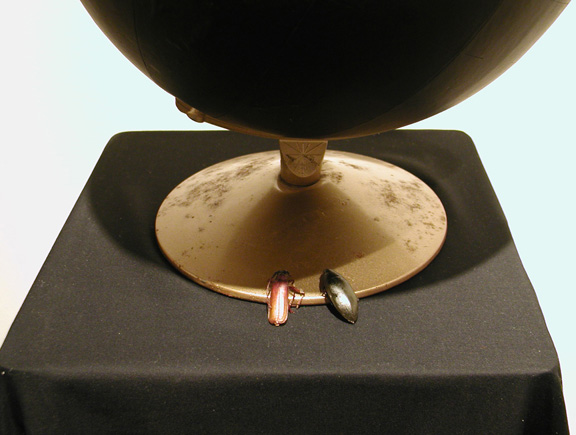
Deep in a N.E Minneapolis warehouse, in a hard-to-find upstairs gallery, there lives an oracle. To find her, you’ll need to pass cobblestones underfoot, locked doors and boxing gyms. If successful, she’ll show you her latest political art exhibition, “Guerilla Art: Art as Activism.”
The oracle is Altered Esthetics gallery director Jamie Schumacher. She presents an ambitious but uneven showing of 86 works made by local activists and artistic untouchables of the international scene. They were all unknowns to this reviewer with names like Joroko, Tambellini, D’Mikos and Cheng. “Guerilla Art” surpasses this anonymity and excels at reconfiguring the spin of politics and advertising. With that it opens a vein of truth so viewers can visually understand the horror of current events and our government’s actions.
Scott Hudson’’s “Warrantless Wiretap” is a shining example of contemporary political work. It is a GE digital answering machine on a pedestal with a message blinking. The recording appears to be of an American announcing the arrival of Iraqi water engineers in their town. I found its domesticity mysterious and engaging. Listening to it, you question its authenticity: “Was there really a wiretap?” “Is a wiretap justified?” and “Who can you trust?” This simple recording brings up all the relevant issues: eroding civil liberties, personal privacy, and general fear. Bobbie Fox’s “Miniscule: Lives Lost in Iraq” is an slap in the face of grandiose war memorials. It’’s a tiny black-and-grey accordion book on a shelf with the names of the Iraqi war dead and a magnifying glass to read the text. Its angles and heavy emphasis on type reminds one of Maya Lin’s Vietnam war memorial but its spinal-tap scale parallels the mockery of the troops which have died and have been largely forgotten by the media and ignored by the Bush administration.
Despite this and his low poll numbers the President is well represented in this show with many portraits and the superb screenprint, “Waron Moron” by the duo Aaron Wilson and Tim Dooley. Their style borrows heavily from pop art. The piece is a clever diptych with fool’s crown and the shadow of a Blackhawk helicopter. The print illustrates both H. W. and G. W. Bush–as an inept diplomat and a misguided aviator. These are two traits of the presidential family that the public is well aware of. The work‘s clever title is esthetically dangerous as it flirts with the lowest common denominator of political art, stupid name calling. I personally find that to be a grade-school trait of the genre that I barely tolerate. But this piece has so many things going for it: the proper blend of craft, expression, and insight. It comes together as a whole. “Esthetically dangerous” almost sums up the overall show. I found much of the work to be spotty in execution but brave in aesthetics. Guerilla art seems to be the forte of the young and the radical. I anticipated more “illegal” art and discovered that the “guerilla” aspect of this show is more in spirit than in practice. The gallery supports this by dressing up in punky, underground guise: the walls are roughly painted, and the thrift-store couches and cockroaches in Carol Macomber’’s brilliant piece “Stay the Course” fit right in. It’s Lower East Side meets the Iron Curtain. This rawness may be to the liking of the makers’ community but it also may discourage the mainstream from attending or taking this art with the seriousness it deserves. These artists are not tempered radicals but are pleading for change to occur from the top down. “Guerilla Art : Art as Activism” reveals a truth that is grim but not vacant, deadly but at times hopeful—it’s aware, not sleeping.
I encourage you to seek out this aesthetic oracle and contemplate it.